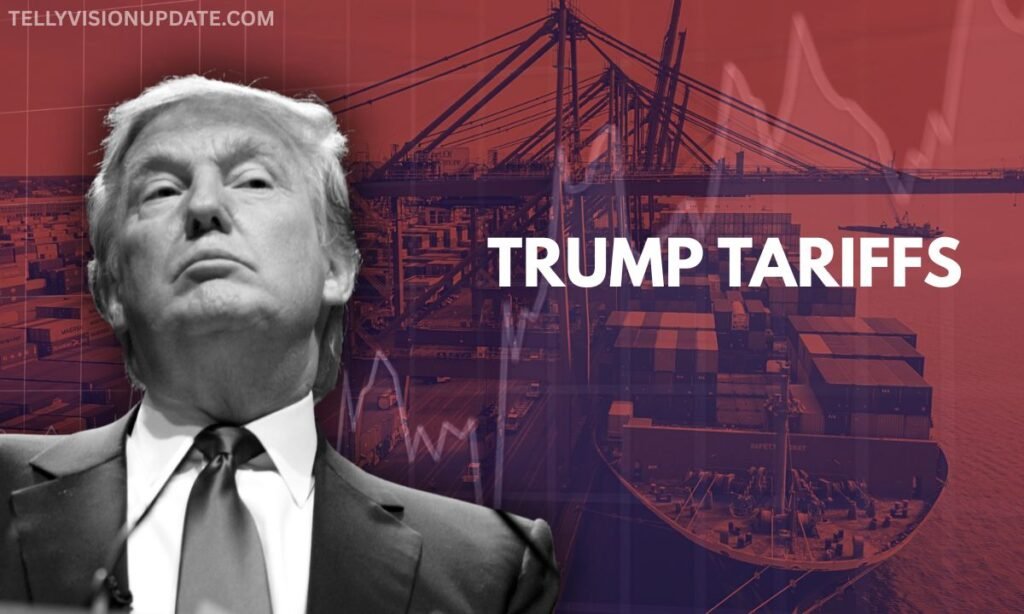
trump tariffs
What Are Trump Tariffs? What are Trump ?
The taxes levied or suggested by the former U.S. President Donald J. Trump, and specifically during his tenure (20162020) and once more becoming a significant policy campaign feature in the year 2025 as he gathers steam in aspirations to freak out his second, non-consecutive term, are called the Trump His economic policy was based on tariffs, referred to as the America First policy, which aimed at reducing the trade deficit, and the re-establishment of manufacturing activities in the United States, as well as responding to unfair trade practices, which he said was being used by China.
In 2025, it so happens that Trump are buzzing once more around the world because of his recent suggestion to have nationwide tariffs on imports should he get back into office. This proposed tariff hike has sparked again a discussion in the community of economists, business, and policymakers after the global supply chain has yet to stabilize because of the COVID-19 impacts and the economic costs of the war in Ukraine.
The History of Trump Tariffs: 2018–2020
The first wave of Trump began in 2018, targeting countries like China, the European Union, and Mexico. Trump’s administration placed:
- 25% tariffs on steel
- 10% tariffs on aluminum
- Various tariffs on over $370 billion worth of Chinese goods
These measures led to immediate retaliation from other nations and sparked the infamous U.S.-China trade war. The goal was to pressure China into fairer trade agreements and stop intellectual property theft.
Key LSI Keywords: U.S.-China trade war, steel tariffs, aluminum tariffs, trade deficit
2. Global Reaction and Economic Fallout
The global impact of Trump during his first presidency was significant. While some industries in the U.S. (like aluminum production) saw short-term benefits, many others, including agriculture and automotive sectors, were negatively affected. Countries like China, Canada, and the EU imposed retaliatory tariffs, escalating global trade tensions.
Impacts included:
- Disruption in global supply chains
- Increased costs for U.S. manufacturers
- Reduced exports due to retaliation
- Global economic slowdown in 2019
In 2025, analysts are concerned a resurgence of Trump could deepen existing economic uncertainty.
3. Trump’s 2025 Tariff Plan: What’s Different Now?
Donald Trump, now a frontrunner for the 2024 election, has proposed an universal 10% tariff on all imports, and 60%+ tariffs on Chinese goods. The rationale behind this aggressive tariff plan is to:
- Boost American manufacturing
- Counteract China’s dominance in key industries like EVs and semiconductors
- Strengthen national economic security
Economists argue this policy could significantly raise consumer prices, increase inflation, and potentially violate WTO (World Trade Organization) rules.
LSI Keywords: import tax, Chinese goods, Trump economic policy, inflation, WTO
4. The Economic Debate: Pros & Cons of Tariffs
Pros:
- Encourages domestic manufacturing
- Reduces dependency on China
- Can protect strategic industries
Cons:
- Higher prices for consumers
- Strain on global supply chains
- Trade retaliation risks
- Harm to export-based U.S. businesses
Many U.S. farmers and small businesses are especially worried, as they were hit hard by the first round of tariffs and fear further economic strain under a renewed Trump tariff regime.
5. Industries Most Affected by Tariffs
| Industry | Impact of Trump Tariffs | Outlook (2025) |
| Agriculture | Export losses, retaliatory tariffs | Very Negative |
| Manufacturing | Higher input costs, mixed results | Uncertain |
| Automotive | Increased prices, slowed production | Negative |
| Tech & Semiconductors | Pressure to diversify suppliers | Positive (if subsidized) |
| Steel & Aluminum | Short-term gain, long-term competition | Mixed |
🇺🇸 6. Political Reactions: Biden vs. Trump Trade Strategy
President Joe Biden took a more diplomatic approach, retaining some of Trump’s tariffs but promoting alliances and focusing on supply chain resilience through the CHIPS Act and partnerships with EU and Indo-Pacific countries.
In contrast, Trump’s 2025 plan is more aggressive, unilateral, and focused on tariff walls to promote American jobs. This clash in ideologies is now a core part of the 2024 campaign trail, with Trump becoming a buzzword again in media debates and economic discussions.
7. Global Trade Implications in 2025
If implemented, Trump’s 2025 tariffs could:
- Cause global markets to contract
- Spark new trade wars, especially with China and Mexico
- Lead to WTO disputes
- Push nations to seek new trade alliances, bypassing the U.S.
Countries like India, Brazil, and Vietnam may benefit as global companies seek to relocate supply chains away from China and into non-tariff zones.
8. Business Preparations: How Companies Are Reacting
To counter possible disruptions, many companies are:
- Restructuring supply chains to diversify away from tariff-hit regions
- Investing in U.S.-based manufacturing to avoid import taxes
- Raising prices in anticipation of rising costs
Big retailers like Walmart and Target have already warned about possible price increases if Trump’s plan goes into effect.
9. Public Opinion and Voter Sentiment
Surveys indicate divided opinions on Trump
- Supporters say they protect American jobs and punish unfair trade partners
- Critics argue they raise prices, hurt farmers, and damage global relations
In 2025, the topic of Trump remains a major election issue, influencing not just trade policies but also public sentiment around the economy, inflation, and American self-reliance.
10. What’s Next for Trump in 2025?
As we head into the U.S. election season, the future of tariffs depends heavily on whether Trump wins the 2024 election. If he does, we could see the most protectionist trade policies in recent American history.
Economists warn of:
- A decline in global trade volumes
- Higher cost of goods across sectors
- Retaliatory tariffs hurting U.S. exports
But Trump supporters argue it’s the price worth paying to revive U.S. manufacturing and regain leverage over countries like China.
Conclusion: Are Trump a Trade Tool or Economic Gamble?
The debate over Trump tariffs is far from over. While they aim to reshape the U.S. economy and bolster national industries, they also bring considerable risks—economic, diplomatic, and political. As 2025 unfolds, all eyes are on how this policy evolves and what it means for global trade, inflation, and the American consumer.
Whether you’re a voter, business owner, or global investor, understanding the Trump tariff strategy will be crucial in navigating the economic shifts of the future.
SEO Keywords Used:
- Trump tariffs
- Trump 2025 tariff plan
- U.S.-China trade war
- Tariffs on imports
- Impact of tariffs
- Global trade policy
- Retaliatory tariffs
- Protectionist trade policy
Read More Blogs :-






